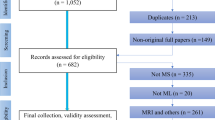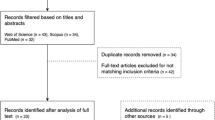Abstract
A chronic autoimmune inflammatory condition called multiple sclerosis (MS) affects the central nervous system which can cause issues related to the brain, optic nerve, and spinal cord. Machine learning (ML) and artificial intelligence (AI)-based multiple sclerosis diagnosis is a rapidly growing field. Multiple sclerosis is a chronic immune system disorder that impacts the central nervous system over an extended period of time and manifests as a variety of symptoms, making it difficult to diagnose. AI and ML techniques have the ability to increase the accuracy and efficiency of MS diagnosis by examining vast quantities of medical information and recognizing patterns that may be challenging for humans to identify. This chapter reviews the current state of the art in AI and ML-based diagnosis of MS, including the use of imaging data, clinical data, and biomarkers. Additionally, it highlights the challenges and limitations of AI and ML in MS diagnosis, along with the potential future possibilities of research in this area.
Access this chapter
Tax calculation will be finalised at checkout
Purchases are for personal use only
Similar content being viewed by others
References
Ciccarelli O, Barkhof F, Bodini B, De Stefano N, Golay X, Nicolay K et al (2014) Pathogenesis of multiple sclerosis: insights from molecular and metabolic imaging. Lancet Neurol 13(8):807–822
Dargahi N, Katsara M, Tselios T, Androutsou M-E, De Courten M, Matsoukas J et al (2017) Multiple sclerosis: immunopathology and treatment update. Brain Sci 7(7):78
Compston A, Coles A (2002) Multiple sclerosis. Lancet 359(9313):1221–1231
Brambilla R (2019) The contribution of astrocytes to the neuroinflammatory response in multiple sclerosis and experimental autoimmune encephalomyelitis. Acta Neuropathol 137(5):757–783
Ebers GC, Sadovnick AD, Risch NJ (1995) A genetic basis for familial aggregation in multiple sclerosis. Nature 377(6545):150–151
Filippi M, Bar-Or A, Piehl F, Preziosa P, Solari A, Vukusic S et al (2018) Multiple sclerosis. Nat Rev Dis Primers 4(1):1–27
Walton C, King R, Rechtman L, Kaye W, Leray E, Marrie RA, et al. Rising prevalence of multiple sclerosis worldwide: Insights from the Atlas of MS, third edition. Multiple Sclerosis Journal. 2020;26(14):1816–21.
Browne P, Chandraratna D, Angood C, Tremlett H, Baker C, Taylor BV et al (2014) Atlas of multiple sclerosis 2013: a growing global problem with widespread inequity. Neurology 83(11):1022–1024
Sharma A, Sharma N, Singh S, Dua K (2023) Review on theranostic and neuroprotective applications of nanotechnology in multiple sclerosis. J Drug Deliv Sci Technol 2023:104220
Brownlee WJ, Hardy TA, Fazekas F, Miller DH (2017) Diagnosis of multiple sclerosis: progress and challenges. The Lancet 389(10076):1336–1346
Damal K, Stoker E, Foley JF (2013) Optimizing therapeutics in the management of patients with multiple sclerosis: a review of drug efficacy, dosing, and mechanisms of action. Biol: Targets Therapy. 2013:247–58.
Wingerchuk DM, Carter JL (eds) (2014) Multiple sclerosis: current and emerging disease-modifying therapies and treatment strategies. Mayo clinic proceedings. Elsevier
Yadav MK, Ahmad S, Raza K, Kumar S, Eswaran M, Pasha KM (2023) Predictive modeling and therapeutic repurposing of natural compounds against the receptor-binding domain of SARS-CoV-2. J Biomol Struct Dyn 41(5):1527–1539
Behara K, Bhero E, Agee JT, Gonela V (2022) Artificial intelligence in medical diagnostics: a review from a South African context. Scientific African, p e01360
Sahu A, Qazi S, Raza K, Singh A, Verma S (2022) Machine learning-based approach for early diagnosis of breast cancer using biomarkers and gene expression profiles. In: Computational intelligence in oncology: applications in diagnosis, prognosis and therapeutics of cancers: Springer, pp 285–306
Kumar Y, Koul A, Singla R, Ijaz MF (2022) Artificial intelligence in disease diagnosis: a systematic literature review, synthesizing framework and future research agenda. J Ambient Intell Human Comput
Qazi S, Iqbal N, Raza K (2021) Machine learning in cancer diagnosis, prognosis and therapy. Artif Intell Data-Driven Med Diagnosis 3:103
Khan FN, Yousef M, Raza K (2022) Machine learning-based models in the diagnosis, prognosis and effective cancer therapeutics: current state-of-the-art. In: Computational intelligence in oncology: applications in diagnosis, prognosis and therapeutics of cancers. Springer, pp 19–54
Mirbabaie M, Stieglitz S, Frick NRJ (2021) Artificial intelligence in disease diagnostics: A critical review and classification on the current state of research guiding future direction. Heal Technol 11(4):693–731
Kaplan A, Haenlein M (2019) Siri, Siri, in my hand: Who’s the fairest in the land? On the interpretations, illustrations, and implications of artificial intelligence. Bus Horiz 62(1):15–25
Yadav SS, Jadhav SM (2019) Deep convolutional neural network based medical image classification for disease diagnosis. J Big Data 6(1):1–18
Ramprasad R, Batra R, Pilania G, Mannodi-Kanakkithodi A, Kim C (2017) Machine learning in materials informatics: recent applications and prospects. npj Comput Mater 3(1):54.
Quinlan JR (1986) Induction of decision trees. Mach Learn 1:81–106
Cox DD, Dean T (2014) Neural networks and neuroscience-inspired computer vision. Curr Biol 24(18):R921–R929
French MN, Krajewski WF, Cuykendall RR (1992) Rainfall forecasting in space and time using a neural network. J Hydrol 137(1–4):1–31
Kriegeskorte N, Golan T (2019) Neural network models and deep learning. Curr Biol 29(7):R231–R236
Krogh A (2008) What are artificial neural networks? Nat Biotechnol 26(2):195–197
Bishop CM (1994) Neural networks and their applications. Rev Sci Instrum 65(6):1803–1832
LeCun Y, Bengio Y, Hinton G (2015) Deep learning. Nature 521(7553):436–444
Alzubi J, Nayyar A, Kumar A (ed) (2018) Machine learning from theory to algorithms: an overview. J Phys: Confer Ser. IOP Publishing
Shoeibi A, Khodatars M, Jafari M, Moridian P, Rezaei M, Alizadehsani R et al (2021) Applications of deep learning techniques for automated multiple sclerosis detection using magnetic resonance imaging: a review. Comput Biol Med 136:104697
Brosch T, Tang LY, Yoo Y, Li DK, Traboulsee A, Tam R (2016) Deep 3D convolutional encoder networks with shortcuts for multiscale feature integration applied to multiple sclerosis lesion segmentation. IEEE Trans Med Imaging 35(5):1229–1239
Bot JC, Barkhof F, Polman C, à Nijeholt GL, De Groot V, Bergers E et al (2004) Spinal cord abnormalities in recently diagnosed MS patients: added value of spinal MRI examination. Neurology 62(2):226–233
Thompson AJ, Banwell BL, Barkhof F, Carroll WM, Coetzee T, Comi G et al (2018) Diagnosis of multiple sclerosis: 2017 revisions of the McDonald criteria. Lancet Neurol 17(2):162–173
Xu J, Xue K, Zhang K (2019) Current status and future trends of clinical diagnoses via image-based deep learning. Theranostics. 9(25):7556
Pretorius P, Quaghebeur G (2003) The role of MRI in the diagnosis of MS. Clin Radiol 58(6):434–448
Avanzo M, Porzio M, Lorenzon L, Milan L, Sghedoni R, Russo G et al (2021) Artificial intelligence applications in medical imaging: a review of the medical physics research in Italy. Physica Med 83:221–241
Alloghani M, Al-Jumeily D, Aljaaf AJ, Khalaf M, Mustafina J, Tan SY (eds) (2019) The application of artificial intelligence technology in healthcare: a systematic review. In: Applied computing to support industry: innovation and technology: first international conference, ACRIT 2019, Ramadi, Iraq, September 15–16, 2019, Revised Selected Papers; 2020: Springer
Vrenken H, Jenkinson M, Pham DL, Guttmann CRG, Pareto D, Paardekooper M et al (2021) Opportunities for understanding MS mechanisms and progression with MRI using large-scale data sharing and artificial intelligence. Neurology 97(21):989–999
Aslam N, Khan IU, Bashamakh A, Alghool FA, Aboulnour M, Alsuwayan NM et al (2022) Multiple sclerosis diagnosis using machine learning and deep learning: challenges and opportunities. Sensors 22(20):7856
Willemink MJ, Koszek WA, Hardell C, Wu J, Fleischmann D, Harvey H et al (2020) Preparing medical imaging data for machine learning. Radiology 295(1):4–15
Dankwa-Mullan I, Weeraratne D (2022) Artificial intelligence and machine learning technologies in cancer care: addressing disparities, bias, and data diversity. Cancer Discov 12(6):1423–1427
Ranschaert ER, Morozov S, Algra PR (2019) Artificial intelligence in medical imaging: opportunities, applications and risks. Springer
Myszczynska MA, Ojamies PN, Lacoste AM, Neil D, Saffari A, Mead R et al (2020) Applications of machine learning to diagnosis and treatment of neurodegenerative diseases. Nat Rev Neurol 16(8):440–456
Shaikh F, Dehmeshki J, Bisdas S, Roettger-Dupont D, Kubassova O, Aziz M et al (2021) Artificial intelligence-based clinical decision support systems using advanced medical imaging and radiomics. Curr Probl Diagn Radiol 50(2):262–267
McKinley R, Wepfer R, Aschwanden F, Grunder L, Muri R, Rummel C et al (2021) Simultaneous lesion and brain segmentation in multiple sclerosis using deep neural networks. Sci Rep 11(1):1087
McKinley R, Meier R, Wiest R (eds) Ensembles of densely-connected CNNs with label-uncertainty for brain tumor segmentation. In: Brainlesion: glioma, multiple sclerosis, stroke and traumatic brain injuries: 4th international workshop, BrainLes 2018, Held in Conjunction with MICCAI 2018, Granada, Spain, September 16, 2018, Revised Selected Papers, Part II 4; 2019. Springer
Eshaghi A, Young AL, Wijeratne PA, Prados F, Arnold DL, Narayanan S et al (2021) Identifying multiple sclerosis subtypes using unsupervised machine learning and MRI data. Nat Commun 12(1):2078
Pemberton HG, Zaki LAM, Goodkin O, Das RK, Steketee RME, Barkhof F et al (2021) Technical and clinical validation of commercial automated volumetric MRI tools for dementia diagnosis—a systematic review. Neuroradiology 63(11):1773–1789
Mendelsohn Z, Pemberton HG, Gray J, Goodkin O, Carrasco FP, Scheel M et al (2023) Commercial volumetric MRI reporting tools in multiple sclerosis: a systematic review of the evidence. Neuroradiology 65(1):5–24
Mande SS, Bose C, Kaur H (2022) System and method for risk assessment of multiple sclerosis. Google Patents
Sati P, Patil SG, Reich D (2022) Automatic identification of subjects at risk of multiple sclerosis. Google Patents
Keller A, Meese E, Borries A, Staehler PF, Beier M (2015) miRNA fingerprint in the diagnosis of multiple sclerosis. Google Patents
Schaevitz L, Ford DJ (2019) Method of predicting severity of multiple sclerosis. Google Patents
Author information
Authors and Affiliations
Corresponding author
Editor information
Editors and Affiliations
Rights and permissions
Copyright information
© 2024 The Author(s), under exclusive license to Springer Nature Singapore Pte Ltd.
About this chapter
Cite this chapter
Sharma, A., Sharma, N., Arora, A., Pal, R. (2024). The Emerging Applications of Machine Learning in the Diagnosis of Multiple Sclerosis. In: Raza, K., Singh, S. (eds) Artificial Intelligence and Autoimmune Diseases. Studies in Computational Intelligence, vol 1133. Springer, Singapore. https://doi.org/10.1007/978-981-99-9029-0_6
Download citation
DOI: https://doi.org/10.1007/978-981-99-9029-0_6
Published:
Publisher Name: Springer, Singapore
Print ISBN: 978-981-99-9028-3
Online ISBN: 978-981-99-9029-0
eBook Packages: Intelligent Technologies and RoboticsIntelligent Technologies and Robotics (R0)




